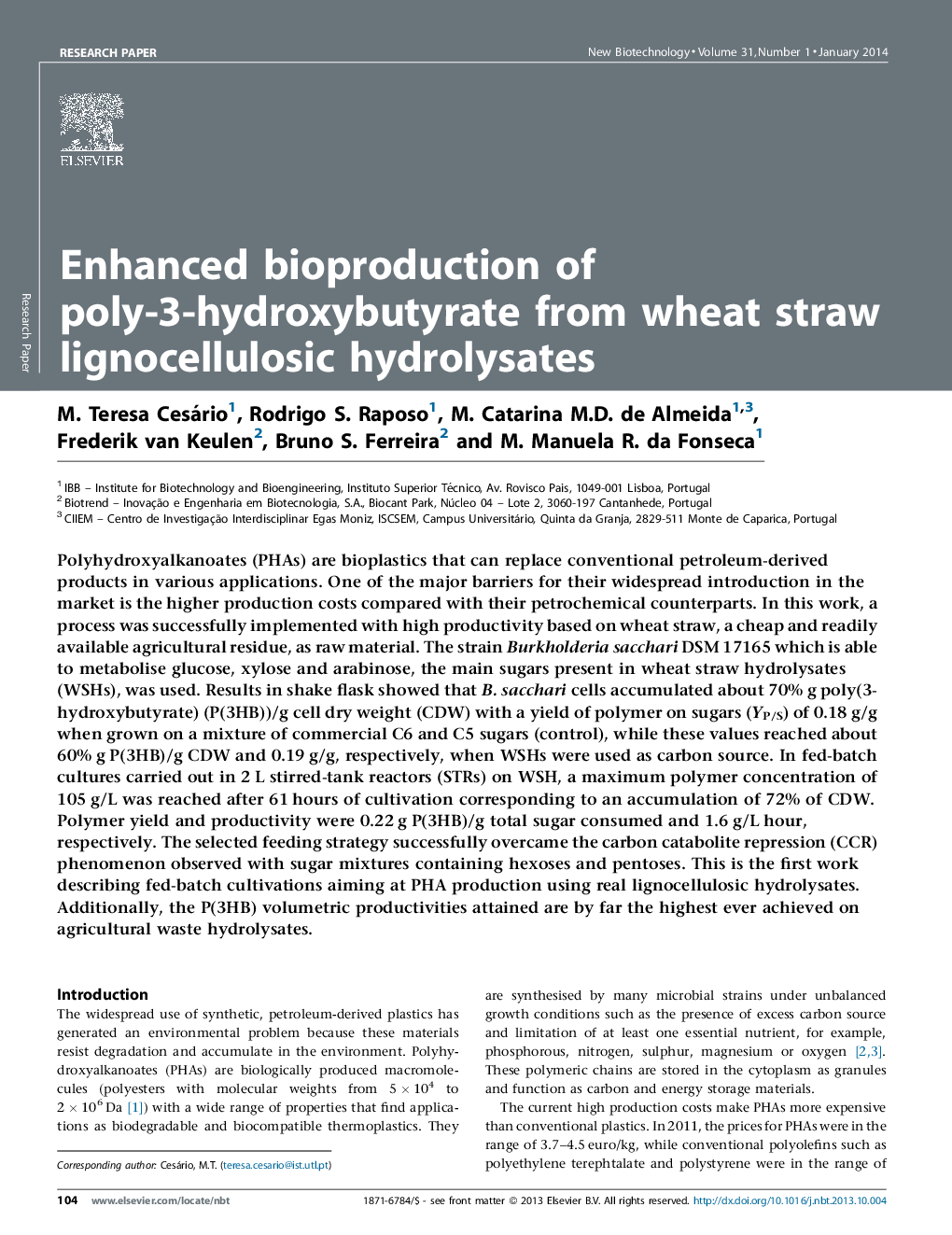| کد مقاله | کد نشریه | سال انتشار | مقاله انگلیسی | نسخه تمام متن |
|---|---|---|---|---|
| 10235055 | 44967 | 2014 | 10 صفحه PDF | دانلود رایگان |
عنوان انگلیسی مقاله ISI
Enhanced bioproduction of poly-3-hydroxybutyrate from wheat straw lignocellulosic hydrolysates
ترجمه فارسی عنوان
تولید بیولوژیک پلی-3-هیدروکسی بوتیرات از هیدرولیزهای لیگنوسلولوس کاه گندم
دانلود مقاله + سفارش ترجمه
دانلود مقاله ISI انگلیسی
رایگان برای ایرانیان
موضوعات مرتبط
مهندسی و علوم پایه
مهندسی شیمی
بیو مهندسی (مهندسی زیستی)
چکیده انگلیسی
Polyhydroxyalkanoates (PHAs) are bioplastics that can replace conventional petroleum-derived products in various applications. One of the major barriers for their widespread introduction in the market is the higher production costs compared with their petrochemical counterparts. In this work, a process was successfully implemented with high productivity based on wheat straw, a cheap and readily available agricultural residue, as raw material. The strain Burkholderia sacchari DSM 17165 which is able to metabolise glucose, xylose and arabinose, the main sugars present in wheat straw hydrolysates (WSHs), was used. Results in shake flask showed that B. sacchari cells accumulated about 70% g poly(3-hydroxybutyrate) (P(3HB))/g cell dry weight (CDW) with a yield of polymer on sugars (YP/S) of 0.18 g/g when grown on a mixture of commercial C6 and C5 sugars (control), while these values reached about 60% g P(3HB)/g CDW and 0.19 g/g, respectively, when WSHs were used as carbon source. In fed-batch cultures carried out in 2 L stirred-tank reactors (STRs) on WSH, a maximum polymer concentration of 105 g/L was reached after 61 hours of cultivation corresponding to an accumulation of 72% of CDW. Polymer yield and productivity were 0.22 g P(3HB)/g total sugar consumed and 1.6 g/L hour, respectively. The selected feeding strategy successfully overcame the carbon catabolite repression (CCR) phenomenon observed with sugar mixtures containing hexoses and pentoses. This is the first work describing fed-batch cultivations aiming at PHA production using real lignocellulosic hydrolysates. Additionally, the P(3HB) volumetric productivities attained are by far the highest ever achieved on agricultural waste hydrolysates.
ناشر
Database: Elsevier - ScienceDirect (ساینس دایرکت)
Journal: New Biotechnology - Volume 31, Issue 1, 25 January 2014, Pages 104-113
Journal: New Biotechnology - Volume 31, Issue 1, 25 January 2014, Pages 104-113
نویسندگان
M. Teresa Cesário, Rodrigo S. Raposo, M. Catarina M.D. de Almeida, Frederik van Keulen, Bruno S. Ferreira, M. Manuela R. da Fonseca,
